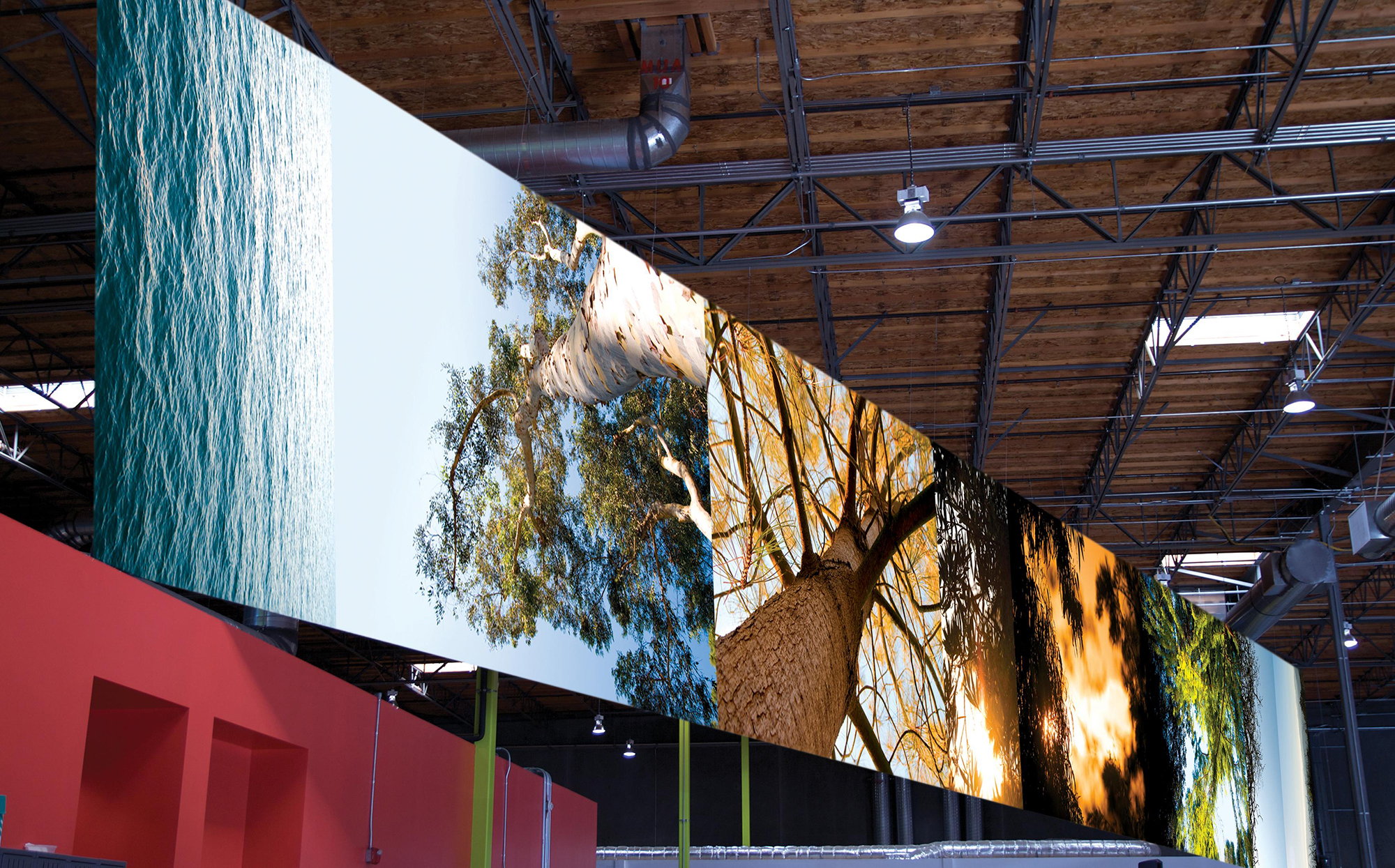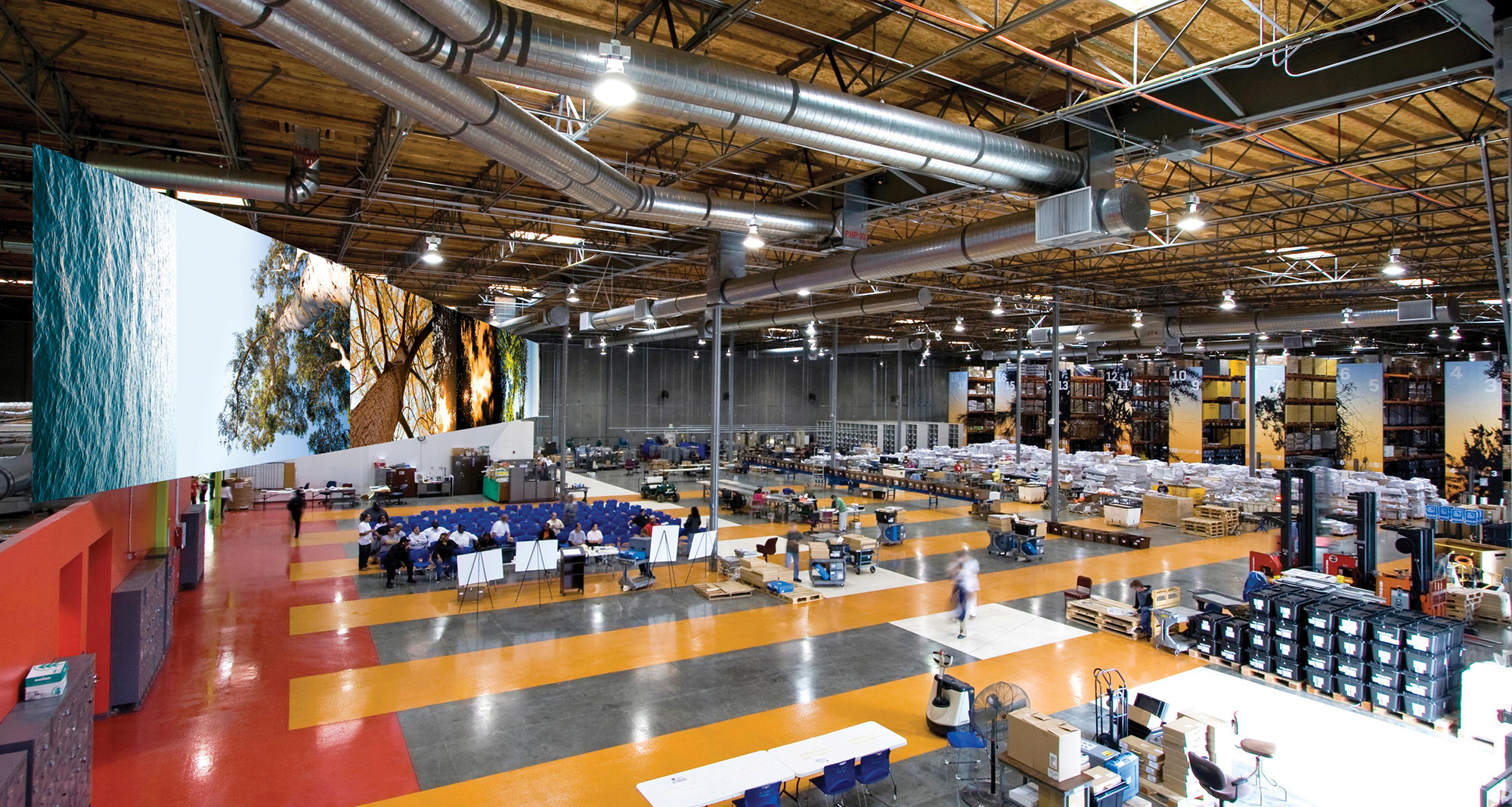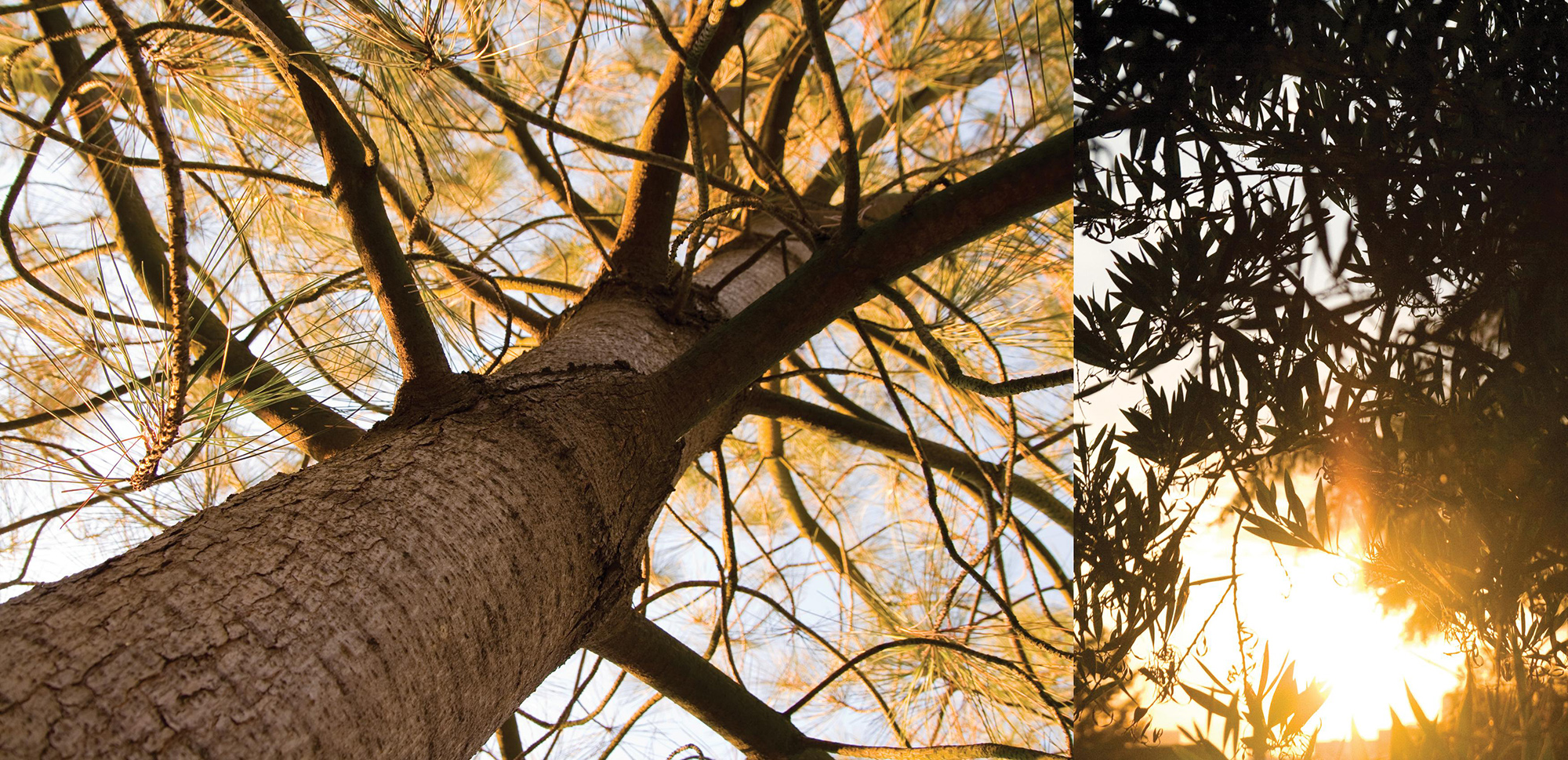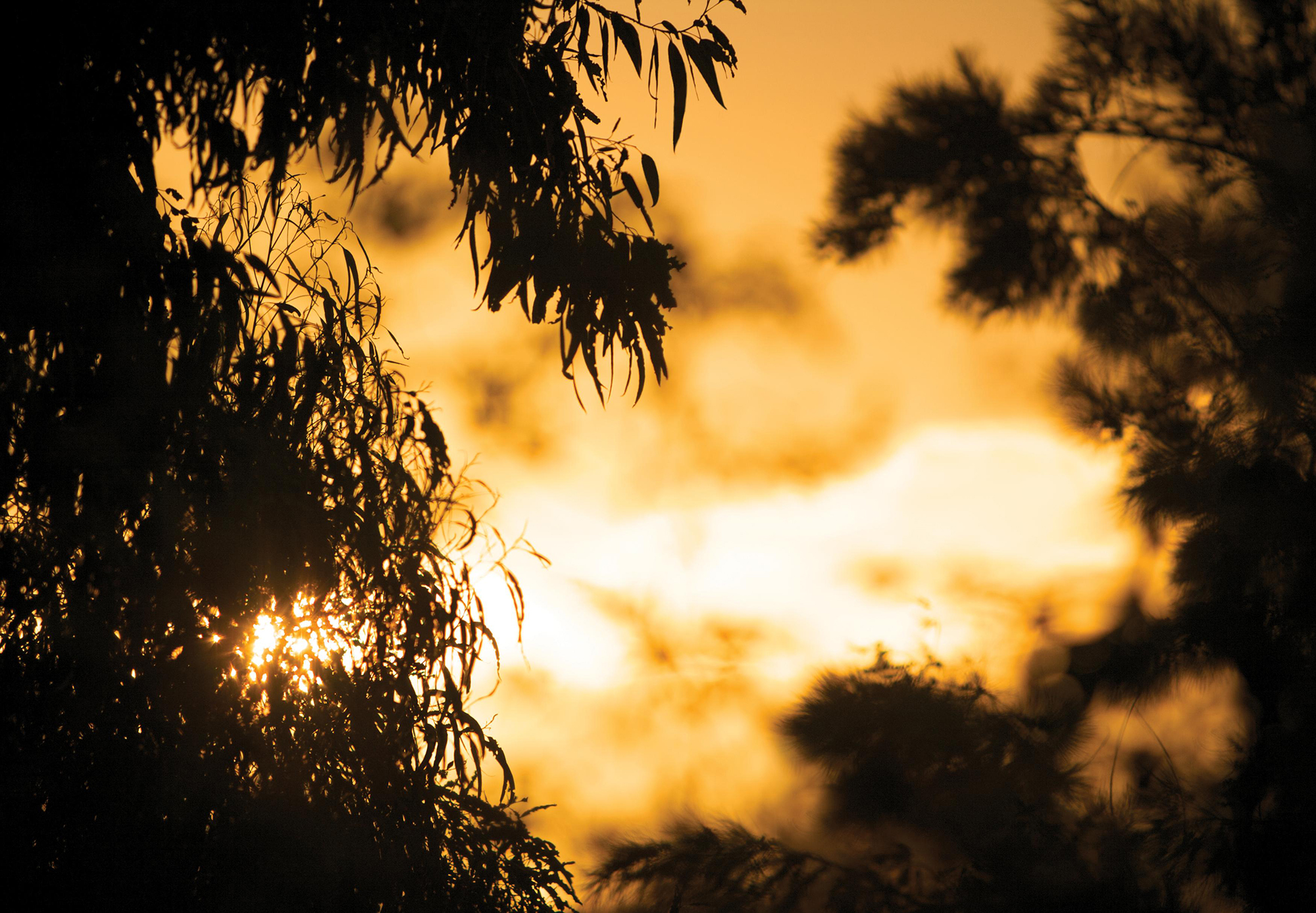TREE BY TREE, FROM SEA TO MOUNTAINS

A commission by the Los Angeles County Arts Commission to create an art installation for the Los Angeles County Registrar-Recorder/County Clerk (RR/CC) warehouse in Santa Fe Springs, Los Angeles County, CA.
The RR/CC Warehouse stores birth, marriage, death and property records, plus it administers the elections. As such, the organization enables democracy and indirectly civilization by providing an infrastructure that legitimizes every citizen’s identity and resulting rights. There is a registration of your life, and your significance is recorded. I chose the tree as a metaphor for its connotation of dignity and growth. In addition, in the 21st century, Los Angeles is home to a rich urban forest where over 1,000 different species, varieties and cultivators coexist, and, like its people, LA’s tree population is known as among the most diverse in the world.
The concept of this artwork is inspired by the central imagery of the Los Angeles County seal, where a dignified Native American woman with a plate of nourishment in her hands stands on the shore of the Pacific Ocean with the San Gabriel Mountains in the background. In the artwork, the viewer’s point of view moves in a 180° skyward pan from the Pacific Ocean to the San Gabriel Mountains. In its trajectory, the viewer encounters branches, tree trunks, the full canopy of diverse tree tops, and open sky, all from human scale. In a sense, the viewer is the woman in the seal. She is the trees, she is mother earth. The extreme length and the diagonal placement of the artwork within the architecture, adds a cross-rhythmic play to the space, activating and dynamically connecting the three of the large architectural volumes.
The artwork is a single (no seams) large format and high-resolution photographic inkjet print, measuring 132 by 15 feet, printed on BIOflex, a fire-retardant and biodegradable vinyl, printed by local supergraphics studio Olson Visual. The structure is held by steel tubes assembled on location and inserted in a top and bottom pocket. The hanging mechanism is from Arakawa Systems.
AWARDS:
1. Los Angeles Architectural Award for Interiors-Civic spaces for the Registrar-Recorder/County Clerk Operation Center. The award sponsored by the Los Angeles Business Council acknowledges that design and architecture play a critical role in the development of cities by creating environments that attract economic development and growth.
2. The Southern California Development Forum (SCDF) awarded the Registrar Recorder / County Clerk Elections Operations Center it’s Interiors Award
3. Honor Award, Environments Category, Annual Design Review I.D.
Magazine 2009
4. Honorable Mention for Design Excellence, Architect Magazine
2009
MORE INFORMATION:
During the initial meeting, the Civic Arts committee expressed a desire for the artwork to convey the diversity of the county, and honor the vital work done by the operating center. The RR/CC Warehouse enables democracy and indirectly civilization by providing an infrastructure that legitimizes every citizen’s identity and resulting rights. There is a registration of your life, and your significance is recorded. As was remarked: “It is a life cycle, a tree of life, a landscape of diversity and democracy.” There is a 120-year urban history to the city of Los Angeles. 120 years of social footsteps, a rich and fluid history of many peoples, a coexistence of immigrants and residents. In what was once a desert, there is now a diversity of land, people and time…and trees.
Through my research, I learned that the Los Angeles basin, before urbanization, was a dry coastal plain known for frequent haze and marine-influenced wind flows. As a result, the flora species growing on the dusty plain were primarily grasses, with spotty patches of chaparral and coastal sage. Only near the river were trees of substantial size to be found. These were California native varieties of sycamores, oaks, walnut and a few cottonwoods.
Nowadays, very few of the city’s street trees are native; eucalyptus trees are from Australia, the jacarandas are native to the Amazon basin, and the iconic palm trees—the Mexican Palm Fan—were planted for the Olympic Games of 1932. Yet, in the 21st century Los Angeles is home to an urban forest where over 1,000 different species, varieties and cultivators coexist, and, like its people, LA’s tree population is known as among the most diverse in the world. This cosmopolitan urban forest has set root in a place where the day is sunny on more than 320 days a year. Under a sky always blue the trees stand tall to provide shade and shelter to our homes and streets.
We all know the benefits of trees: They remove carbon from the air and produce oxygen; a mature tree creates enough annually to meet the needs of a family of four for an entire year. The trees trap air pollution, absorb storm water and hold erosion. They screen out noise and reduce stress. The trees provide habitat for wildlife. The trees can improve property values by as much as 20 percent. If one thing, the trees are model citizens.
One seldom takes the time to notice the trees. When one does it is usually when lying in the grass underneath one in summer, treasuring the cool grass, listening to a bird sing, watching the leaves glistening in the sun while a moment of absolute peace fills you. When the employee looks up at the art, we hope it evokes the calm and comfort of these moments. We hope it brings back sweet memories of time spent in private gardens and public parks in Los Angeles. We hope the viewers sense the dignity and vitality of the majestic trees, in their silent cyclical, upward growth toward the open sky. We hope they will identify with the trees, understanding that however mundane their task at hand may be, how important their contribution is to the health and wealth of the greater good.
FABRICATION:
The artwork is a single (no seams) large format and high-resolution photographic inkjet print, measuring 132 × 15 feet, printed on BIOflex, a fire-retardant and biodegradable vinyl, by local supergraphics studio Olson Visual. The structure is held by steel tubes assembled on location and inserted in a top and bottom pocket. The hanging mechanism is from Arakawa Systems. The printing and installation were led by Eder Cetina, who did an exceptional job. Two nights in a row we worked from 7pm to 7am on installing the artwork. His crew, guys originally from México, Guatemala and El Salvador, had such passion, dedication, precision, pride in performing the best job possible, here in Los Angeles, their adopted homeland.
Architecture by Lehrer Architects. Michael Lehrer, a man whose optimism, wisdom and vision for a better society is present in his building and relationships. It was an absolute pleasure working with him on this public art installation.
When the site manager of the warehouse arrived in the morning she went into shock. She demanded that the work be taken down as the forklift trucks might hit the artwork. While the architect, the art commission and too many county representatives gathered nervously, my husband Adam–who’d spent a summer at the Amsterdam airport driving forklifts– remarked dryly: “The banner is installed at 18 feet height. A forklift truck passes underneath it easily. You do know it is the law that you can only move a forklift with the forks at ground level, no?” Problem solved!
The RR/CC Warehouse stores birth, marriage, death and property records, plus it administers the elections. As such, the organization enables democracy and indirectly civilization by providing an infrastructure that legitimizes every citizen’s identity and resulting rights. There is a registration of your life, and your significance is recorded. I chose the tree as a metaphor for its connotation of dignity and growth. In addition, in the 21st century, Los Angeles is home to a rich urban forest where over 1,000 different species, varieties and cultivators coexist, and, like its people, LA’s tree population is known as among the most diverse in the world.
The concept of this artwork is inspired by the central imagery of the Los Angeles County seal, where a dignified Native American woman with a plate of nourishment in her hands stands on the shore of the Pacific Ocean with the San Gabriel Mountains in the background. In the artwork, the viewer’s point of view moves in a 180° skyward pan from the Pacific Ocean to the San Gabriel Mountains. In its trajectory, the viewer encounters branches, tree trunks, the full canopy of diverse tree tops, and open sky, all from human scale. In a sense, the viewer is the woman in the seal. She is the trees, she is mother earth. The extreme length and the diagonal placement of the artwork within the architecture, adds a cross-rhythmic play to the space, activating and dynamically connecting the three of the large architectural volumes.
The artwork is a single (no seams) large format and high-resolution photographic inkjet print, measuring 132 by 15 feet, printed on BIOflex, a fire-retardant and biodegradable vinyl, printed by local supergraphics studio Olson Visual. The structure is held by steel tubes assembled on location and inserted in a top and bottom pocket. The hanging mechanism is from Arakawa Systems.
AWARDS:
1. Los Angeles Architectural Award for Interiors-Civic spaces for the Registrar-Recorder/County Clerk Operation Center. The award sponsored by the Los Angeles Business Council acknowledges that design and architecture play a critical role in the development of cities by creating environments that attract economic development and growth.
2. The Southern California Development Forum (SCDF) awarded the Registrar Recorder / County Clerk Elections Operations Center it’s Interiors Award
3. Honor Award, Environments Category, Annual Design Review I.D.
Magazine 2009
4. Honorable Mention for Design Excellence, Architect Magazine
2009
MORE INFORMATION:
During the initial meeting, the Civic Arts committee expressed a desire for the artwork to convey the diversity of the county, and honor the vital work done by the operating center. The RR/CC Warehouse enables democracy and indirectly civilization by providing an infrastructure that legitimizes every citizen’s identity and resulting rights. There is a registration of your life, and your significance is recorded. As was remarked: “It is a life cycle, a tree of life, a landscape of diversity and democracy.” There is a 120-year urban history to the city of Los Angeles. 120 years of social footsteps, a rich and fluid history of many peoples, a coexistence of immigrants and residents. In what was once a desert, there is now a diversity of land, people and time…and trees.
Through my research, I learned that the Los Angeles basin, before urbanization, was a dry coastal plain known for frequent haze and marine-influenced wind flows. As a result, the flora species growing on the dusty plain were primarily grasses, with spotty patches of chaparral and coastal sage. Only near the river were trees of substantial size to be found. These were California native varieties of sycamores, oaks, walnut and a few cottonwoods.
Nowadays, very few of the city’s street trees are native; eucalyptus trees are from Australia, the jacarandas are native to the Amazon basin, and the iconic palm trees—the Mexican Palm Fan—were planted for the Olympic Games of 1932. Yet, in the 21st century Los Angeles is home to an urban forest where over 1,000 different species, varieties and cultivators coexist, and, like its people, LA’s tree population is known as among the most diverse in the world. This cosmopolitan urban forest has set root in a place where the day is sunny on more than 320 days a year. Under a sky always blue the trees stand tall to provide shade and shelter to our homes and streets.
We all know the benefits of trees: They remove carbon from the air and produce oxygen; a mature tree creates enough annually to meet the needs of a family of four for an entire year. The trees trap air pollution, absorb storm water and hold erosion. They screen out noise and reduce stress. The trees provide habitat for wildlife. The trees can improve property values by as much as 20 percent. If one thing, the trees are model citizens.
One seldom takes the time to notice the trees. When one does it is usually when lying in the grass underneath one in summer, treasuring the cool grass, listening to a bird sing, watching the leaves glistening in the sun while a moment of absolute peace fills you. When the employee looks up at the art, we hope it evokes the calm and comfort of these moments. We hope it brings back sweet memories of time spent in private gardens and public parks in Los Angeles. We hope the viewers sense the dignity and vitality of the majestic trees, in their silent cyclical, upward growth toward the open sky. We hope they will identify with the trees, understanding that however mundane their task at hand may be, how important their contribution is to the health and wealth of the greater good.
FABRICATION:
The artwork is a single (no seams) large format and high-resolution photographic inkjet print, measuring 132 × 15 feet, printed on BIOflex, a fire-retardant and biodegradable vinyl, by local supergraphics studio Olson Visual. The structure is held by steel tubes assembled on location and inserted in a top and bottom pocket. The hanging mechanism is from Arakawa Systems. The printing and installation were led by Eder Cetina, who did an exceptional job. Two nights in a row we worked from 7pm to 7am on installing the artwork. His crew, guys originally from México, Guatemala and El Salvador, had such passion, dedication, precision, pride in performing the best job possible, here in Los Angeles, their adopted homeland.
Architecture by Lehrer Architects. Michael Lehrer, a man whose optimism, wisdom and vision for a better society is present in his building and relationships. It was an absolute pleasure working with him on this public art installation.
When the site manager of the warehouse arrived in the morning she went into shock. She demanded that the work be taken down as the forklift trucks might hit the artwork. While the architect, the art commission and too many county representatives gathered nervously, my husband Adam–who’d spent a summer at the Amsterdam airport driving forklifts– remarked dryly: “The banner is installed at 18 feet height. A forklift truck passes underneath it easily. You do know it is the law that you can only move a forklift with the forks at ground level, no?” Problem solved!







